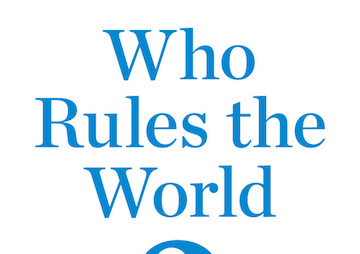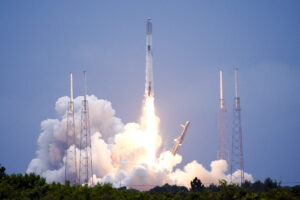American Power Under Challenge: Masters of Mankind (Part 1)
We cannot gain a realistic understanding of who rules the world while ignoring the “masters of mankind,” as Adam Smith called them: in his day, the merchants and manufacturers of England; in ours, multinational conglomerates, huge financial institutions, retail empires and the like. 1
2
3
4
1
2
3
4
Unprecedented protest in the United States was a manifestation of the opposition to aggression that began decades earlier in the condemnation of the U.S. wars in Indochina, reaching a scale that was substantial and influential, even if far too late. By 1967, when the antiwar movement was becoming a significant force, military historian and Vietnam specialist Bernard Fall warned that “Vietnam as a cultural and historic entity… is threatened with extinction… [as] the countryside literally dies under the blows of the largest military machine ever unleashed on an area of this size.”
But the antiwar movement did become a force that could not be ignored. Nor could it be ignored when Ronald Reagan came into office determined to launch an assault on Central America. His administration mimicked closely the steps John F. Kennedy had taken 20 years earlier in launching the war against South Vietnam, but had to back off because of the kind of vigorous public protest that had been lacking in the early 1960s. The assault was awful enough. The victims have yet to recover. But what happened to South Vietnam and later all of Indochina, where “the second superpower” imposed its impediments only much later in the conflict, was incomparably worse.
It is often argued that the enormous public opposition to the invasion of Iraq had no effect. That seems incorrect to me. Again, the invasion was horrifying enough, and its aftermath is utterly grotesque. Nevertheless, it could have been far worse. Vice President Dick Cheney, Secretary of Defense Donald Rumsfeld, and the rest of Bush’s top officials could never even contemplate the sort of measures that President Kennedy and President Lyndon Johnson adopted 40 years earlier largely without protest.
Western Power Under Pressure
There is far more to say, of course, about the factors in determining state policy that are put to the side when we adopt the standard convention that states are the actors in international affairs. But with such nontrivial caveats as these, let us nevertheless adopt the convention, at least as a first approximation to reality. Then the question of who rules the world leads at once to such concerns as China’s rise to power and its challenge to the United States and “world order,” the new cold war simmering in eastern Europe, the Global War on Terror, American hegemony and American decline, and a range of similar considerations.
The challenges faced by Western power at the outset of 2016 are usefully summarized within the conventional framework by Gideon Rachman, chief foreign-affairs columnist for the London Financial Times. He begins by reviewing the Western picture of world order: “Ever since the end of the Cold War, the overwhelming power of the U.S. military has been the central fact of international politics.” This is particularly crucial in three regions: East Asia, where “the U.S. Navy has become used to treating the Pacific as an ‘American lake’”; Europe, where NATO — meaning the United States, which “accounts for a staggering three-quarters of NATO’s military spending” — “guarantees the territorial integrity of its member states”; and the Middle East, where giant U.S. naval and air bases “exist to reassure friends and to intimidate rivals.”
The problem of world order today, Rachman continues, is that “these security orders are now under challenge in all three regions” because of Russian intervention in Ukraine and Syria, and because of China turning its nearby seas from an American lake to “clearly contested water.” The fundamental question of international relations, then, is whether the United States should “accept that other major powers should have some kind of zone of influence in their neighborhoods.” Rachman thinks it should, for reasons of “diffusion of economic power around the world — combined with simple common sense.”
There are, to be sure, ways of looking at the world from different standpoints. But let us keep to these three regions, surely critically important ones.
The Challenges Today: East Asia
Beginning with the “American lake,” some eyebrows might be raised over the report in mid-December 2015 that “an American B-52 bomber on a routine mission over the South China Sea unintentionally flew within two nautical miles of an artificial island built by China, senior defense officials said, exacerbating a hotly divisive issue for Washington and Beijing.” Those familiar with the grim record of the 70 years of the nuclear weapons era will be all too aware that this is the kind of incident that has often come perilously close to igniting terminal nuclear war. One need not be a supporter of China’s provocative and aggressive actions in the South China Sea to notice that the incident did not involve a Chinese nuclear-capable bomber in the Caribbean, or off the coast of California, where China has no pretensions of establishing a “Chinese lake.” Luckily for the world.
Chinese leaders understand very well that their country’s maritime trade routes are ringed with hostile powers from Japan through the Malacca Straits and beyond, backed by overwhelming U.S. military force. Accordingly, China is proceeding to expand westward with extensive investments and careful moves toward integration. In part, these developments are within the framework of the Shanghai Cooperation Organization (SCO), which includes the Central Asian states and Russia, and soon India and Pakistan with Iran as one of the observers — a status that was denied to the United States, which was also called on to close all military bases in the region. China is constructing a modernized version of the old silk roads, with the intent not only of integrating the region under Chinese influence, but also of reaching Europe and the Middle Eastern oil-producing regions. It is pouring huge sums into creating an integrated Asian energy and commercial system, with extensive high-speed rail lines and pipelines.
One element of the program is a highway through some of the world’s tallest mountains to the new Chinese-developed port of Gwadar in Pakistan, which will protect oil shipments from potential U.S. interference. The program may also, China and Pakistan hope, spur industrial development in Pakistan, which the United States has not undertaken despite massive military aid, and might also provide an incentive for Pakistan to clamp down on domestic terrorism, a serious issue for China in western Xinjiang Province. Gwadar will be part of China’s “string of pearls,” bases being constructed in the Indian Ocean for commercial purposes but potentially also for military use, with the expectation that China might someday be able to project power as far as the Persian Gulf for the first time in the modern era.
All of these moves remain immune to Washington’s overwhelming military power, short of annihilation by nuclear war, which would destroy the United States as well.
In 2015, China also established the Asian Infrastructure Investment Bank (AIIB), with itself as the main shareholder. Fifty-six nations participated in the opening in Beijing in June, including U.S. allies Australia, Britain, and others which joined in defiance of Washington’s wishes. The United States and Japan were absent. Some analysts believe that the new bank might turn out to be a competitor to the Bretton Woods institutions (the IMF and the World Bank), in which the United States holds veto power. There are also some expectations that the SCO might eventually become a counterpart to NATO.
Your support matters…Independent journalism is under threat and overshadowed by heavily funded mainstream media.
You can help level the playing field. Become a member.
Your tax-deductible contribution keeps us digging beneath the headlines to give you thought-provoking, investigative reporting and analysis that unearths what's really happening- without compromise.
Give today to support our courageous, independent journalists.






You need to be a supporter to comment.
There are currently no responses to this article.
Be the first to respond.